Moon Phases and Spiritual Meaning – A Deep Dive into Celestial Significance
In the tapestry of the universe, few celestial events captivate the human spirit as deeply as the ever-evolving dance of the moon. The moon, with its silvery sheen and rhythmic phases, has not just been a beacon in the night sky but a profound spiritual symbol across ages and cultures.
At the confluence of science and spirituality, the moon phases’ spiritual meaning sheds light on the ebb and flow of life, resonating with our internal energies, aspirations, and emotions.
As one delves into the profound connection between lunar cycles and spirituality, intriguing questions arise:
- How have ancient civilizations interpreted the moon’s transitions?
- What wisdom can modern seekers glean from the moon’s predictable yet mysterious cycles?
Dive into this exploration of the moon’s phases and their spiritual significance, understanding not just the cosmos, but also a deeper aspect of oneself.
The journey promises to be as illuminating as a moonlit night, beckoning readers to delve deeper into lunar lore and its intersection with spiritual growth.
Understanding Moon Phases
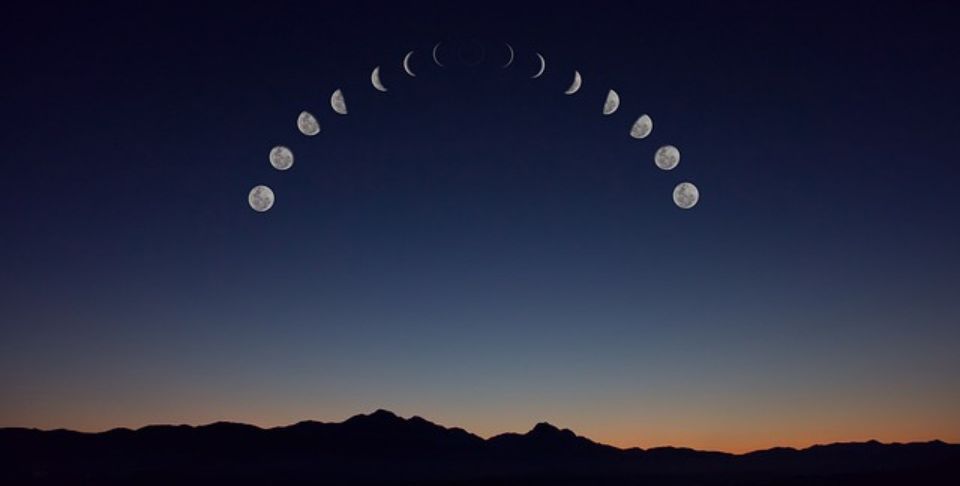
The moon’s ever-shifting dance is both a celestial marvel and a spiritual compass. Within this section, we’ll unpack the intrinsic spiritual meanings behind each lunar phase.
From the introspective New Moon to the illuminating Full Moon, delve into the nuanced spiritual significance and discover how these phases mirror our inner journey.
Embark on this enlightening exploration, weaving together cosmic patterns and spiritual insights.
What are the primary phases of the moon?
The moon’s journey across the sky, with its dynamic phases, reflects spiritual ebbs and flows. Grasping the spiritual significance of these phases is akin to unlocking a cosmic roadmap to one’s inner universe.
- New Moon: Symbolizing new beginnings, this phase is a blank canvas in the lunar cycle. Spiritually, it encourages introspection, setting intentions, and embarking on fresh paths.
- Waxing Crescent: A sliver of light grows, indicative of building energies. On a spiritual plane, it signifies determination, growth, and the germination of ideas planted during the New Moon.
- First Quarter: With half the moon illuminated, challenges may arise. This phase reminds us spiritually of the importance of perseverance and the necessity of overcoming obstacles to grow.
- Waxing Gibbous: As the moon nears fullness, anticipation builds. Spiritually, it’s a time of refinement, calibration, and focusing on the goals set earlier in the cycle.
- Full Moon: The moon in all its radiant glory symbolizes fulfillment and clarity. Its spiritual essence is that of realization, gratitude, and celebration of accomplishments.
- Waning Gibbous: As the moon begins to decrease in light, it’s a period of introspection. Spiritually, it stands for releasing, letting go, and reflecting on one’s journey.
- Last Quarter: With half the moon in darkness, it represents a spiritual crossroads, prompting us to evaluate our paths and make necessary adjustments.
- Waning Crescent: The final phase before the New Moon, this phase embodies surrender. Spiritually, it’s a phase of healing, recuperation, and preparing oneself for the next cycle.
The interconnectedness between these phases and our spiritual journey is profound. Just as the moon transitions through phases, our souls navigate through cycles of growth, reflection, and transformation.
By aligning with these celestial rhythms, we can tap into deeper realms of understanding and spirituality.
How do moon cycles impact the Earth?
The dance between the Earth and the moon is an age-old waltz, filled with subtle nuances and spiritual intricacies.
As the moon journeys through its phases, it casts a unique energy blend upon our planet, influencing both tangible and esoteric realms.
- Tidal Movements: At the heart of the moon’s influence are the tides. Its gravitational pull governs the ebb and flow of our oceans. As the waters sway, they mirror the rhythm of life, a constant balance of give and take, teaching us spiritual lessons about harmony and fluidity.
- Biological Clocks: Many creatures, from coral to coastal birds, synchronize their reproductive and feeding cycles with the moon. This intrinsic connection speaks to a deeper, spiritual link between Earth’s inhabitants and the cosmos, suggesting a universal design and purpose.
- Human Behavior: Folklore and anecdotes often allude to heightened emotions and behaviors during full moons. While scientific confirmation varies, the notion positions the moon as a celestial mirror, reflecting our innermost desires and fears, and urging spiritual introspection.
- Plant Growth: Some traditional farming practices align planting and harvesting with specific moon phases, leveraging lunar energies for crop vitality. This ancient wisdom reinforces the spiritual idea that alignment with cosmic rhythms can enhance earthly endeavors.
- Energetic Shifts: Many spiritual practitioners feel a palpable shift in energy during different moon phases. These energies, ranging from introspective during the new moon to expressive during the full moon, provide guidance for meditation, healing, and personal growth.
The moon’s cyclical dance with Earth is more than just a visual spectacle; it’s a profound spiritual reminder of interconnectedness.
By understanding its tangible impacts, we’re better equipped to embrace its intangible lessons, grounding ourselves in both the physical and spiritual realms of existence.
The Spiritual Essence of Each Phase

Dive deep into the spiritual essence of each moon phase, unlocking cosmic insights and ethereal energies. As we journey through each phase, we’ll uncover the distinct spiritual vibrations they emit, guiding souls towards enlightenment and inner harmony.
Embrace the celestial journey, awakening to the moon’s profound teachings.
How does the New Moon inspire new beginnings?
The New Moon, often depicted as a blank canvas in the celestial sky, stands as a powerful symbol of rebirth and rejuvenation in spiritual circles. It beckons us to introspect, set intentions, and plant the seeds for what we wish to manifest.
Let’s delve into its spiritual significance:
- Cycles of Renewal: Just as nature’s seasons change, the New Moon marks the start of a fresh lunar cycle, offering us a monthly opportunity for self-reflection and growth.
- Energetic Shifts: Spiritually, the absence of moonlight during the New Moon creates a vacuum of cosmic energy. This quietness encourages us to tap into our innermost desires and dreams, recharging our spiritual batteries.
- Manifestation Magic: Many spiritual practitioners believe the New Moon is a prime time for rituals and manifestations. Setting intentions during this phase amplifies the power of our desires, aligning them with the universe’s vibrational frequencies.
- Shadow Work: The darkness of the New Moon also serves as a reminder to confront our shadows. Embracing this time can lead to profound spiritual revelations, encouraging us to release old patterns and embrace transformative growth.
In essence, the New Moon serves as a monthly spiritual reset, a moment to cleanse, recalibrate, and set forth on new journeys with clarity and purpose.
By recognizing its potent energies and aligning our practices with its rhythms, we can harness its power, catalyzing transformative shifts in our spiritual journeys.
What is the spiritual significance of the Waxing Crescent?

The Waxing Crescent moon phase, often visualized as a slim sliver of light appearing after the New Moon, holds profound spiritual meaning. This phase embodies the spirit of initiation and the zest to pursue our dreams.
Let’s explore the spiritual nuances woven into this luminescent crescent:
- Ignition of Intentions: Planted during the New Moon, our intentions begin to sprout. This phase urges us to cultivate the seeds of our desires, nourishing them with positive energy and unwavering focus.
- Stoking Spiritual Courage: As the moon’s light gradually expands, so does our spiritual bravery. The Waxing Crescent encourages us to face obstacles head-on, armed with resilience and faith.
- Growth & Expansion: Symbolizing incremental growth, this phase is a gentle reminder of the power of persistence. Our spiritual journey, much like the moon’s expansion, thrives on consistency, patience, and dedication.
- Reaffirmation of Faith: The first visible sign of the moon’s return serves as a testament to the cyclical nature of life and the inevitability of resurgence. It reiterates that after every metaphorical ‘dark night’, there’s a promise of renewed light and hope.
The Waxing Crescent stands as an emblem of optimism, propelling us to stay committed to our spiritual quests. Embracing its energies ensures we remain anchored in faith, hopeful for what’s blossoming, and invigorated to tread the path of self-discovery.
How does the Full Moon relate to culmination and realization?

Bathing our world in its fullest light, the Full Moon is not merely a celestial phenomenon; it’s a spiritual landmark, marking the zenith of energies and the pinnacle of realization.
But how exactly does this radiant orb signify culmination and the fruits of inner labor?
- Manifestation of Intentions: Those seeds of intention, sown during the New Moon and nurtured through subsequent phases, now reach their full bloom. The Full Moon acts as a beacon, spotlighting our achievements and the materialization of our desires.
- Emotional Catharsis: As tides swell under its influence, so do our emotions. This period often triggers introspection, urging us to confront, embrace, and release pent-up feelings, facilitating a profound emotional cleanse.
- Spiritual Clarity: The illuminated night sky mirrors the clarity we attain on our spiritual journey. The answers that seemed elusive earlier now appear evident, providing a clear roadmap for our spiritual quest.
- Celebration of Growth: Every Full Moon is a testament to the cyclical journey of growth and decay. It’s a time to acknowledge our evolution, cherishing the spiritual strides we’ve made.
- Preparation for Release: While it marks culmination, the Full Moon also hints at the impending release. As we revel in our achievements, it subtly reminds us to let go, preparing us for the waning phase ahead.
The Full Moon is not just a phase; it’s an event. An event where the universe and our inner selves converge, celebrating accomplishments and paving the way for further spiritual growth.
Harnessing its potent energy can catalyze profound transformations, guiding our souls towards deeper enlightenment.
Why is the Waning Gibbous seen as a period of reflection?
Following the brilliant climax of the Full Moon, the Waning Gibbous moon phase takes on the mantle of guiding our spiritual descent, whispering the importance of introspection and gratitude into our souls.
But what is it about this phase that deeply resonates with reflection?
- Diminishing Light: As the moon’s luminosity gently recedes, it mirrors the subtle shift from external achievements to internal contemplation. This diminishing light symbolizes the transition from outward celebration to inward retrospection.
- Harvesting Insights: Just as farmers harvest their crops, this phase encourages us to harvest our insights. It’s a time to absorb the lessons, integrate the wisdom, and discern the essence of our experiences.
- Evaluating the Spiritual Journey: Post culmination, the Waning Gibbous phase prompts a review. Did our intentions manifest as envisioned? Were there unforeseen challenges? Such reflections shape our future spiritual endeavors.
- Gratitude and Acceptance: This phase fosters gratitude. Recognizing and accepting both our accomplishments and shortcomings becomes the foundation for holistic spiritual growth.
- Preparation for Release: The ebbing light of the Waning Gibbous signals an approaching time to let go. Reflecting upon what no longer serves us readies our spirit for the forthcoming release.
The Waning Gibbous phase, in its tranquil splendor, offers a spiritual respite, allowing us to breathe, reflect, and assimilate.
In its serene light, we find the space to deeply connect with our inner selves, ensuring that our spiritual journey remains grounded, genuine, and aligned.
What energies does the Last Quarter Moon bring?
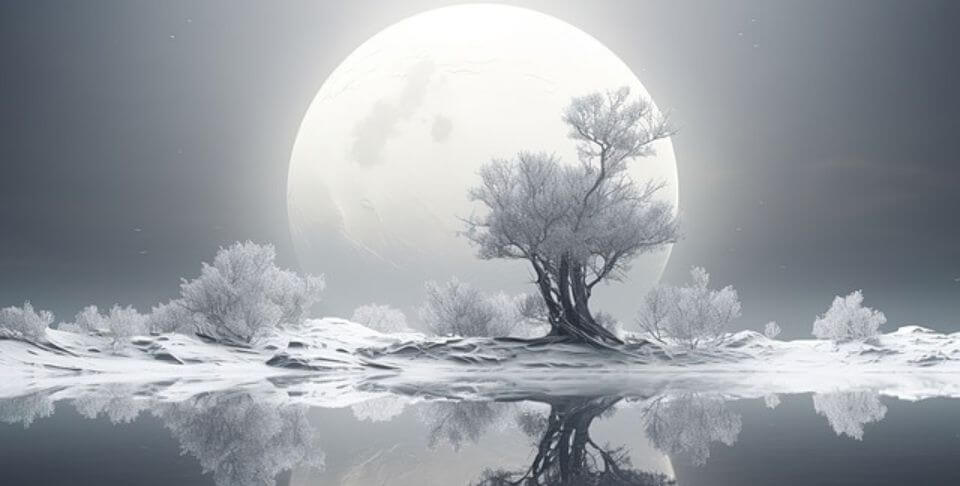
When the moon graces our skies as the Last Quarter, it presents not just a celestial display, but an evocative dance of energies that beckon the spirit.
The Last Quarter Moon isn’t just a phase; it’s a spiritual threshold that stirs a unique vibrational frequency within us.
- Invitation to Let Go: As the moon completes its cycle, its waning form becomes an emblem of release. This phase ushers in energies that encourage letting go of attachments, be they material or emotional.
- Transformation and Transition: The Last Quarter Moon’s energies pivot around change. It’s a call to transition, to evolve, to shape-shift into the next phase of our spiritual journey.
- Introspective Meditation: The subdued illumination fosters an environment conducive for deep meditation. It’s an opportune time to reflect upon the past, bringing clarity to the present and insight for the future.
- Rebalancing Energies: The equilibrium between light and shadow during this phase promotes balance. It inspires us to align our inner duality, harmonizing our yin and yang.
- Rejuvenation and Rest: As nature prepares for a new lunar cycle, so should we. The energies of the Last Quarter Moon advocate for rest, relaxation, and rejuvenation, ensuring we’re revitalized for upcoming challenges.
The Last Quarter Moon, with its poignant energies, serves as a spiritual touchstone. It whispers the age-old wisdom of cycles, endings, and new beginnings.
In its serene, half-lit glow, we are reminded to trust the journey, to embrace the ebb and flow, and to cherish each moment as a sacred step on our spiritual path.
How does the Waning Crescent signal release and closure?
The Waning Crescent, the moon’s slender sliver before the New Moon, is more than just a breathtaking visual spectacle; it holds profound spiritual significance.
As the moon retreats into darkness, its fading glow imparts lessons of closure, release, and the eternal cycle of rebirth.
- Symbol of Release: The diminishing form of the Waning Crescent stands as a beacon for letting go. It reminds us to shed old habits, beliefs, and attachments, paving the way for spiritual growth and new beginnings.
- Whispers of Closure: This phase resonates with endings. It’s a cosmic nod to finalize unfinished business, heal unresolved wounds, and find closure in personal matters, allowing the soul to move forward unburdened.
- Sacred Stillness: The muted light of the Waning Crescent invites introspection. In this quietude, there’s space to assess our spiritual journey, contemplate life’s mysteries, and seek answers from the universe.
- Cycle of Renewal: The nearing New Moon signifies rebirth. The Waning Crescent teaches us the importance of endings as precursors to beginnings, underscoring life’s continuous cycle of creation and dissolution.
- Embrace of Acceptance: As the moon fades, we’re inspired to accept our imperfections, embrace our vulnerabilities, and recognize that every phase—whether of the moon or life—has its unique purpose.
Witnessing the Waning Crescent is akin to observing the final notes of a soulful melody. It’s an ethereal reminder that, in spirituality, endings are but doorways to new adventures.
As the lunar light dwindles, we’re encouraged to find strength in release, find peace in closure, and prepare our spirits for the promise of rejuvenation that the New Moon brings.
Historical Insight into Moon Phase Spirituality

Dive deep into the “Historical Insight into Moon Phase Spirituality.” Throughout the annals of time, the moon’s phases have captivated spiritual seekers. Unravel the ancestral wisdom and sacred practices these luminous cycles inspired.
Embark on a timeless journey, where ancient lore meets spiritual evolution.
How have ancient civilizations revered the moon?

From the shimmering sands of ancient Egypt to the mist-clad heights of the Andes, civilizations have consistently beheld the moon with a sense of wonder.
The ethereal glow, ever-changing yet always returning, resonated with our ancestors, inviting them to draw deeper spiritual connections.
- Mesopotamia’s Moon Gods: The cradle of civilization, ancient Mesopotamia, revered Nanna, the moon deity. This celestial luminary was seen as a protector and a timekeeper, influencing the tides of both waters and human endeavors.
- Egypt’s Lunar Calendar: Ancient Egyptians, operating on a lunar calendar, associated the moon with the god Thoth, the scribe and arbitrator of divine disputes. For them, each lunar cycle symbolized birth, growth, and decay, intertwined with the natural world’s rhythms.
- Mayan Moon Goddesses: Ixchel, the aged jaguar goddess of midwifery in Mayan mythology, was closely linked with the moon’s waxing and waning phases. This association underscored the moon’s influence on fertility and the ebb and flow of life.
- Celtic Moon Lore: The Celts, with their druidic traditions, believed the moon to be a beacon of wisdom and insight. Lunar eclipses, especially, were moments of profound spiritual significance, seen as times when the veil between realms grew thin.
While these are mere glimpses into a vast tapestry of lunar reverence, they highlight a shared spirituality across diverse cultures.
Despite geographic and temporal divides, the moon has been a unifying emblem, a beacon in the night, guiding humanity’s spiritual journey for millennia.
Are there universal themes in moon spirituality across cultures?
The moon, that luminous orb floating in the vast canvas of the night sky, has long held a captivating grip on the human psyche.
Despite the vast array of cultures, languages, and beliefs, moon spirituality has consistently revealed universal themes that resonate with the core of our shared humanity.
Delving into these spiritual undercurrents, we uncover:
- Cycles of Life and Renewal: Much like the moon waxes and wanes, life too undergoes cycles of birth, growth, decline, and rebirth. Cultures from the Maya to the Maori have regarded the moon as a symbol of these eternal rhythms.
- Fertility and Nourishment: The connection between the moon’s phases and agricultural calendars is deeply entrenched in civilizations from ancient Sumer to medieval Europe. The moon’s cyclical journey was seen as influencing the seasons, crops, and, by extension, human fertility.
- Illumination and Wisdom: Spiritual seekers, whether in the deserts of Arabia or the forests of the Celts, have looked to the moon for guidance. Its soft glow in the darkest nights is universally seen as a source of enlightenment, both literal and metaphysical.
- Connection and Unity: Even when surrounded by the vast expanse of the starry universe, the moon serves as a unifying force. Native American tribes to Asian dynasties, all viewed the moon as a collective experience, a celestial body observed and revered by all.
- Transition and Change: The moon’s ever-changing nature, from crescent to full and back again, is a poignant reminder of life’s impermanence. This theme is echoed in teachings from Buddhism to ancient Greek philosophy.
While the stories, myths, and rituals might differ, the moon’s spiritual essence remains strikingly consistent across the tapestry of human culture.
It stands as a testament to the shared experiences and beliefs that, despite our diverse paths, weave us together in the vast web of spirituality.
Spiritual Practices Aligned with Moon Phases

Delve into the realm of “Practical Spiritual Practices Aligned with Moon Phases” to uncover profound rituals and techniques. Harnessing the moon’s energy, each phase presents unique spiritual opportunities.
Explore time-tested practices that intertwine with lunar cycles, elevating spiritual growth and self-awareness.
How can you harness the New Moon for setting intentions?
The New Moon, with its velvety darkness, offers a cosmic canvas for envisioning our deepest desires and spiritual aspirations.
When the sky is empty of moonlight, it’s a pivotal time to turn inward, reflecting on our internal landscapes.
- Sacred Space Creation: Begin by establishing a serene environment. This could be an altar adorned with crystals, incense, and symbolic items or a simple quiet corner of your home. It’s all about creating a space that resonates with your soul.
- Meditative Mindfulness: Engage in deep meditation, allowing the serene energy of the New Moon to envelop your thoughts. Through focused breathing and visualization, tap into your spiritual core.
- Journaling Journey: Articulating your intentions on paper can be incredibly transformative. By writing, you’re giving form to your thoughts, making your desires tangible. It becomes a spiritual contract between you and the universe.
- Affirmative Recitations: Craft personalized affirmations that align with your aspirations. Vocalizing these with conviction during the New Moon phase amplifies their potency.
- Candle Ritual: Lighting a candle can symbolize the spark of your intentions. As the flame dances, it sends your aspirations into the universe, embodying hope and promise.
Tuning into the New Moon’s energy is about more than just ritualistic actions; it’s about aligning your soul’s desires with cosmic rhythms. By setting intentions during this phase, you’re planting spiritual seeds that, with nurture and time, can manifest into tangible outcomes.
Remember, harnessing the New Moon’s energy isn’t a one-size-fits-all approach. Spirituality is deeply personal. It’s a dance between the cosmic and the self, choreographed by intentions and genuine commitment.
What rituals are best performed during the Full Moon?
The Full Moon, bathing the world in its silvery luminescence, stands as a beacon of culmination and realization. Its radiant glow symbolizes wholeness, illuminating both the external world and our innermost spiritual dimensions.
When the moon is at its zenith, it’s an optimal time for rituals that foster reflection, gratitude, and release.
- Crystal Charging: The Full Moon’s rays can cleanse and recharge your crystals. Place them under its light, letting the lunar energy rejuvenate their vibrational frequencies.
- Lunar Bathing: Immerse yourself in moonlight, either outdoors or by a window. As you absorb its energy, envision it purifying and revitalizing every cell, healing and empowering your spirit.
- Reflection and Gratitude: With the Full Moon’s illumination, reflect upon the journey since the New Moon. Celebrate your achievements, acknowledge your growth, and express gratitude for the universe’s bounty.
- Fire Ceremony: Write down what no longer serves you—be it habits, fears, or past traumas. Safely burn these writings in a fire, symbolizing their release and transformation into light and ash.
- Meditative Drumming: Using a drum or another instrument, tap into the rhythmic heartbeat of the universe. Let the Full Moon guide your tempo, harmonizing your energy with the cosmos.
- Lunar Elixirs: Place a jug of water under the Full Moon. As it absorbs the moon’s energy, it becomes a potent elixir, which, when drunk, can impart spiritual clarity and strength.
The Full Moon, in its spiritual splendor, offers a mirror to our souls, reflecting both our luminous achievements and shadows yet to be embraced.
By engaging in these rituals, we not only honor the cosmic dance but also our journey within this vast spiritual tapestry.
Engaging with the Full Moon is not just about external rituals, but about an internal communion—a moment where the soul, basking in lunar brilliance, finds its voice and sings its song of existence.
How can the Waning Phase assist in letting go?
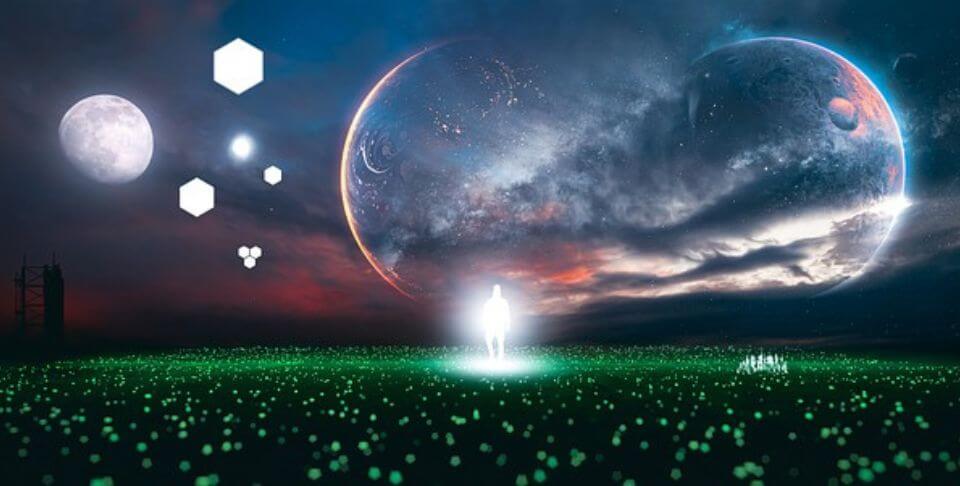
As the moon transitions from its brilliant fullness to the embrace of shadows in its waning phase, so do we mirror this ebb within our own spiritual journeys. The waning moon whispers of cycles, of releasing, and of preparing the soul’s soil for new seeds.
It is a profound period for introspection, healing, and spiritual decluttering, making way for rejuvenation.
- Reflective Journaling: Dive deep into your feelings. List out burdens, regrets, or any lingering negativity. Writing is cathartic, helping to distill emotions and provide clarity on what truly requires releasing.
- Guided Meditations: Focus on the theme of release. Let the waning moon’s energy guide you, visualizing it drawing out what no longer serves your highest good.
- Sage Smudging: In many spiritual practices, burning sage helps clear negative energy. As you waft the smoke around you, let it capture the unwanted vibes, taking them away as it dissipates.
- Shadow Work: The moon’s diminishing light is a powerful metaphor for confronting our own inner shadows. Engage in practices that help you accept, heal, and integrate these shadow aspects.
- Salt Baths: Just as the moon recedes, allow a salt bath to draw out and cleanse any energetic toxins, renewing your spiritual aura.
- Affirmations: Reinforce your intention to let go with daily affirmations. Statements like, “I release what no longer serves me,” can become powerful anchors during this phase.
The waning moon’s spiritual essence is not of diminishment, but of purification. Like a master sculptor chipping away the excess to reveal a masterpiece beneath, the waning phase nudges us to shed the redundant, refining our spirits for the coming cycle.
Embracing its energy is akin to accepting that every end is a precursor to a new beginning, in the eternal dance of spirituality.
There’s profound wisdom in the rhythms of nature, reminding us that there’s a time to shine, a time to grow, and, crucially, a time to let go. The waning moon stands as a sentinel to this eternal truth.
The Science Behind the Spiritual – Moon’s Effect on Humans
Bridging spirituality with science, this section delves into the tangible ways the moon influences humans. Beyond mystical beliefs, discover how lunar cycles scientifically resonate with our being.
As we navigate this confluence of realms, uncover the empirical truth of the moon’s magnetic pull on our soul and psyche.
Is there a psychological basis for moon phase influences?
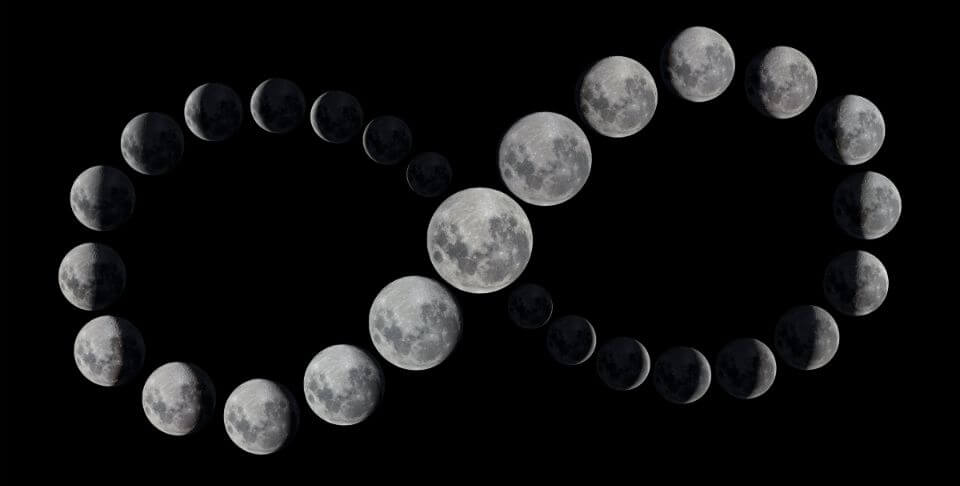
For eons, stories of the moon’s sway over human behavior have been whispered in hushed reverence. But is there a foundation in psychology to support such claims?
Scientific inquiry, combined with ancient spiritual knowledge, gives us an intriguing lens to examine this age-old question.
Studies indicate that lunar phases might, in fact, impact certain aspects of human psychology. The full moon, often cited in myths for its transformative power, has been researched for potential correlations with sleep patterns, mood fluctuations, and even birth rates.
While results vary, some studies suggest subtle shifts in human behavior that align with the lunar calendar. The gravitational tug, while primarily affecting ocean tides, could, in theory, have some nuanced effects on the human body, given our substantial water content.
However, the psychological realm is not merely influenced by physical elements. The placebo effect is a testament to the mind’s power. If individuals deeply believe in the moon’s influence, this belief alone can catalyze psychological responses.
This fusion of belief and biology is where spirituality intersects with science.
It’s essential, though, to approach this topic with discernment. Extravagant claims require robust evidence. While there’s undeniable romance in believing the moon governs our emotions, weaving this into our spiritual narrative requires a delicate balance of faith and facts.
In the end, the relationship between the moon’s phases and human psychology remains a mesmerizing dance—equally steeped in mystery and wonder.
As spirituality enthusiasts, our quest isn’t just about answers but about embracing the beautiful intricacies of the journey itself.
How does the moon affect our sleep and emotions?
The luminescent glow of the moon has, for ages, been a beacon in the night, casting shadows and illuminating dreams.
But beyond its radiant beauty, does the moon weave a deeper influence over our nocturnal rest and emotional tides?
Sleep Patterns and Lunar Phases: Scientifically, the correlation between lunar phases and sleep patterns remains an intriguing study area. Research suggests that during a full moon, individuals might experience:
- Reduced sleep duration.
- Longer time to fall asleep.
- Decreased deep sleep stages. It’s hypothesized that our ancestral connection to natural light sources may have programmed our circadian rhythms to these lunar cycles, even if modern artificial lights somewhat mute this influence.
Emotional Ebbs and Flows: Beyond the confines of tangible science, the moon, especially in its full phase, has often been anecdotally linked with heightened emotions. Some posit:
- Increased introspection during the new moon.
- Enhanced extroversion and energy during the full moon. This can be attributed to the age-old belief in the moon’s spiritual energy impacting human consciousness.
The interplay between the moon’s gravitational force, its light, and the human psyche’s mysteries can indeed render subtle shifts in our emotions. Just as ocean tides ebb and flow under lunar guidance, so might the internal seas of our emotions.
However, the tapestry of human emotion is multifaceted. While the moon may play a role, a myriad of factors—environmental, biological, and personal experiences—intertwine to shape our emotional landscape.
It’s a cosmic dance of spirituality and science, where empirical evidence waltzes with ancient beliefs.
In the spiritual journey, it’s worthwhile to observe these lunar influences, not as deterministic forces but as gentle nudges, reminding us of our interconnectedness with the vast cosmos.
Integrating Moon Phase Wisdom into Modern Spirituality
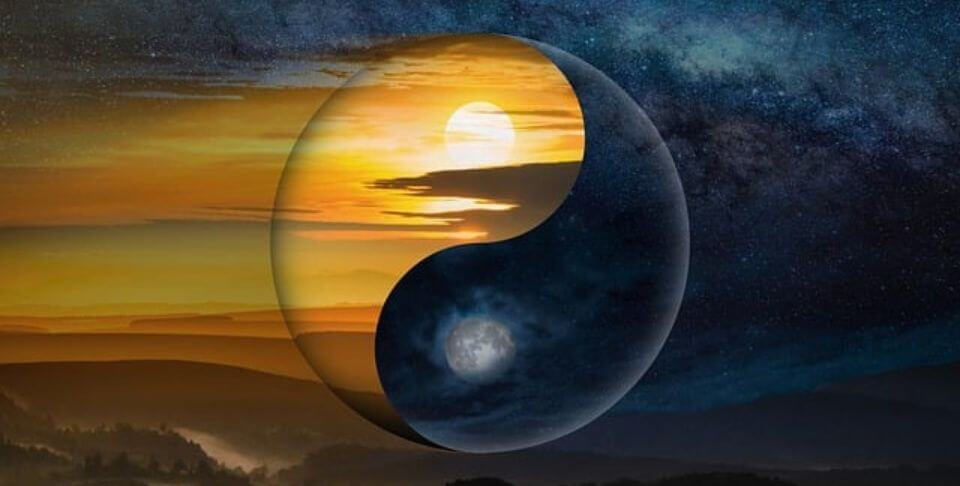
In “Integrating Moon Phase Wisdom into Modern Spirituality,” we’ll uncover how ancient lunar insights can harmonize with today’s spiritual practices. Dive deep into rituals, meditations, and philosophies shaped by the moon’s timeless dance, enriching contemporary spiritual journeys.
Explore this fusion of celestial wisdom and modern soulfulness.
How can we use lunar cycles in meditation and mindfulness?
The intertwining of lunar cycles with meditation and mindfulness provides an opportunity to deeply connect with the universe’s ebb and flow.
By aligning our spiritual practices with the moon’s phases, we harness the cosmos’s rhythm for personal growth.
- New Moon Meditation: A time for planting seeds of intention. In the stillness, focus on new beginnings, envisioning what you wish to manifest in the upcoming cycle.
- Full Moon Mindfulness: The moon’s luminous peak can aid in cultivating gratitude. As you meditate, reflect on the progress you’ve made and the blessings you’ve received.
- Waning Moon Release: As the moon’s glow diminishes, it becomes an opportune period to let go. Practice mindfulness exercises that center on releasing regrets, forgiving oneself and others, and shedding past burdens.
- Crescent Moon Contemplation: This phase beckons inner reflection. It’s an optimal time to contemplate life’s mysteries and your place within the grand cosmic play.
Incorporating these lunar-aligned practices into daily meditation and mindfulness routines can offer a refreshing perspective. It’s not just about connecting with the moon, but realizing the interconnectedness of all things in our vast universe.
Embracing the moon’s wisdom can truly enhance our spiritual journey, grounding us in ancient rhythms while evolving our modern spiritual practices.
What are the benefits of aligning daily practices with the moon?
Aligning our daily practices with the lunar cycles isn’t just an ancient spiritual tradition; it offers a myriad of tangible benefits for the contemporary seeker.
By tapping into the moon’s phases, we synchronize with natural rhythms, anchoring our spiritual endeavors in cosmic wisdom.
- Enhanced Intuition: Much like the gravitational pull of the moon affects the tides, it can also subtly influence our intuitive abilities. Regular lunar-aligned practices can refine our inner senses, making us more attuned to the world around us.
- Purposeful Intentions: New moons become a canvas for setting intentions. By focusing our energy in sync with this phase, our desires and aspirations gain a stronger momentum.
- Heightened Reflection: Full moons illuminate our accomplishments and challenges. This light aids in self-reflection, helping us recognize growth areas and appreciate our journey’s milestones.
- Facilitated Release: The waning moon is a period of letting go. By aligning practices during this time, we can more effortlessly shed limiting beliefs, habits, and energies that no longer serve our highest good.
- Deeper Connection: Our ancestors looked up to the moon for guidance. Aligning with the moon fosters a profound connection to nature, the cosmos, and our own spiritual lineage.
- Structured Routine: The consistent cycle of the moon offers a natural framework for spiritual practices, fostering discipline and commitment in seekers.
The moon, in all its phases, provides a celestial compass, guiding us through the ebb and flow of life. By aligning with its rhythms, we not only enrich our spiritual practices but embrace a holistic approach to well-being, grounded in time-tested cosmic truths.
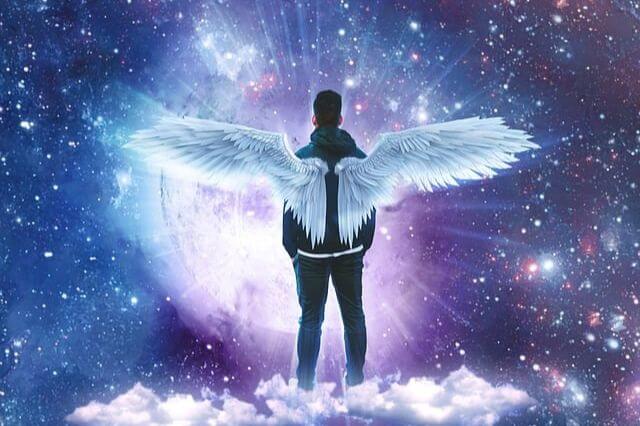
Conclusion : How can a deeper understanding of moon phases enrich our spiritual journey?
As we journey through the tapestry of life, the moon remains our constant celestial companion. This shimmering orb, eternally suspended in the night sky, serves not just as a beacon of light, but as a symbolic guide to our inner landscape.
But how does an enriched knowledge of its phases elevate our spiritual pursuits?
- Unveiling Cosmic Patterns: Recognizing the moon’s patterns creates a parallel for understanding the cyclical nature of our own lives — birth, growth, decline, and renewal. This cyclical recognition fosters acceptance and flow with life’s ever-changing nature.
- Timelessness of Tradition: Embracing lunar wisdom isn’t merely adopting a trend; it’s stepping into a lineage of ancient practices. This timeless connection to our ancestors adds depth to our spiritual explorations.
- Personal Growth: By observing the moon, we’re prompted to self-reflect, set intentions, and release. These rituals, aligned with lunar energies, potentiate transformation and personal evolution.
- Holistic Integration: The moon teaches us about balance — light and shadow, ebb and flow. As we integrate this understanding, our spiritual path becomes more holistic, embracing both our luminous triumphs and shadowed challenges.
- Communion with Nature: By attuning to the moon’s rhythm, we inherently attune to Earth and her natural processes. This reconnection to nature deepens our spiritual grounding.
In encapsulating our journey with the moon, we find that its wisdom is not just of cosmic importance, but profoundly personal. The phases of the moon, mirrored in the phases of our lives, remind us of the interconnected dance of the universe.
As seekers, this deeper understanding becomes a compass, navigating us towards enlightenment, fulfillment, and a more profound communion with the mysteries of existence.
By intertwining our path with lunar insights, we don’t just observe the dance; we become active participants in the grand choreography of the cosmos.







